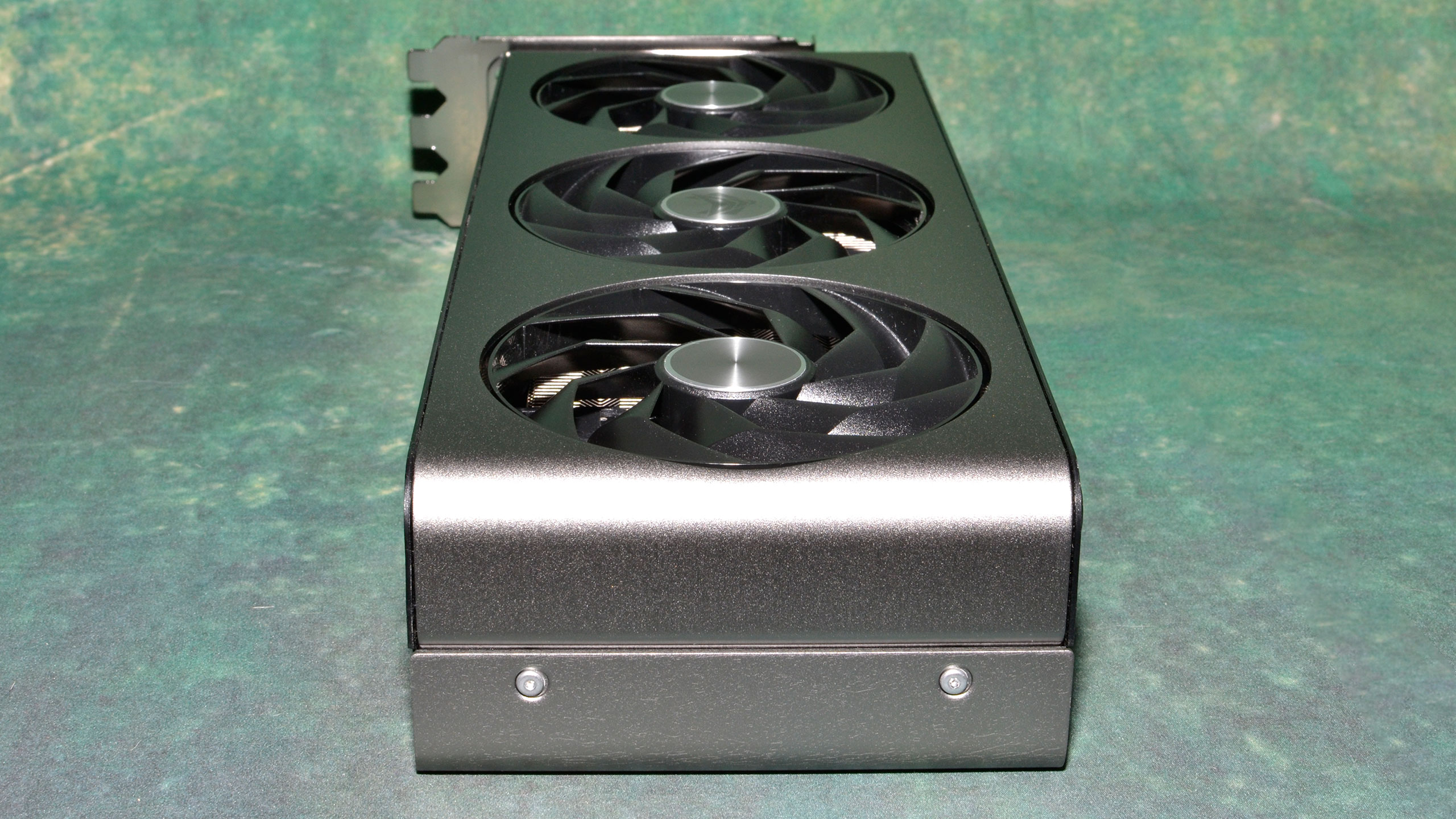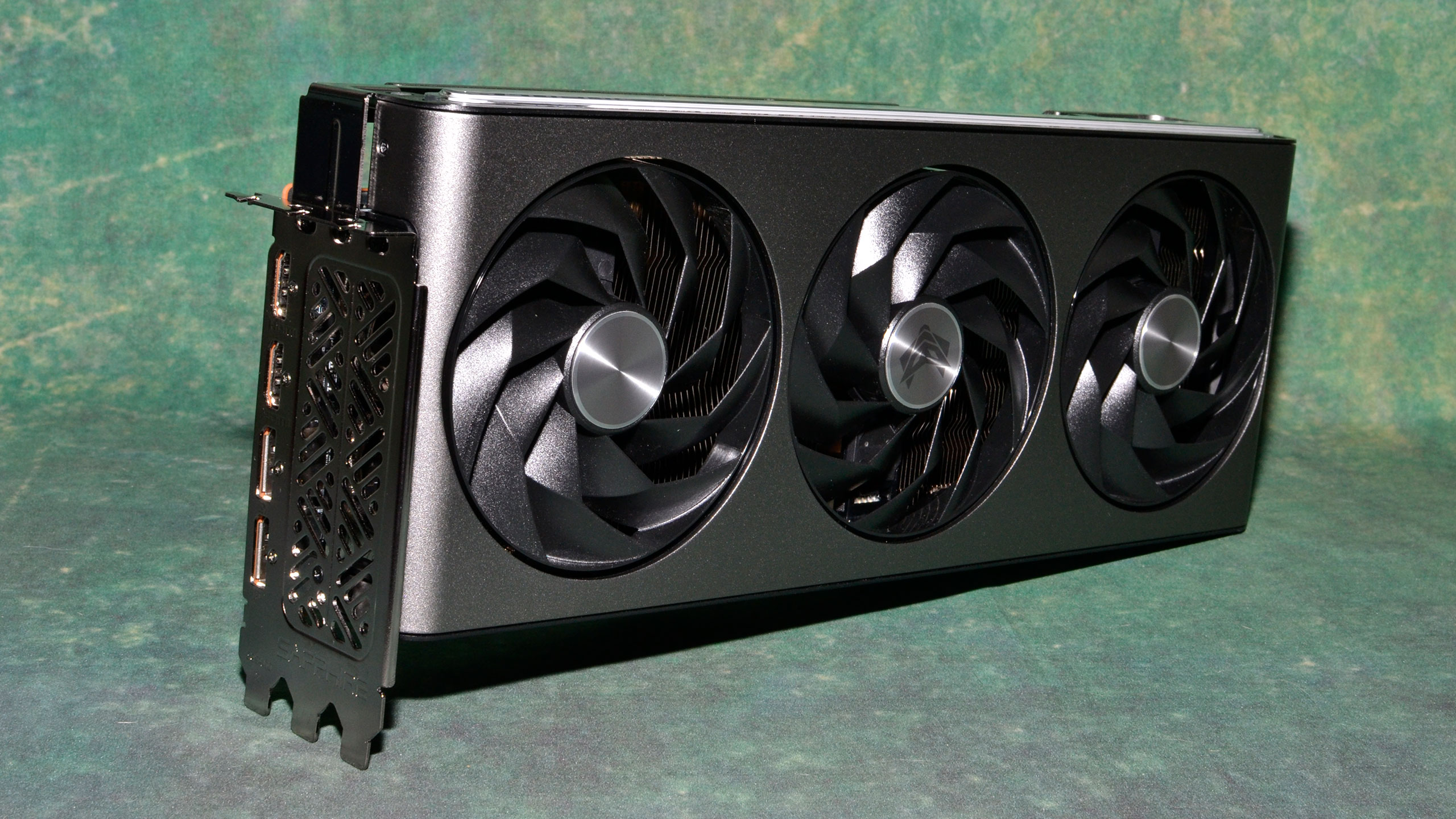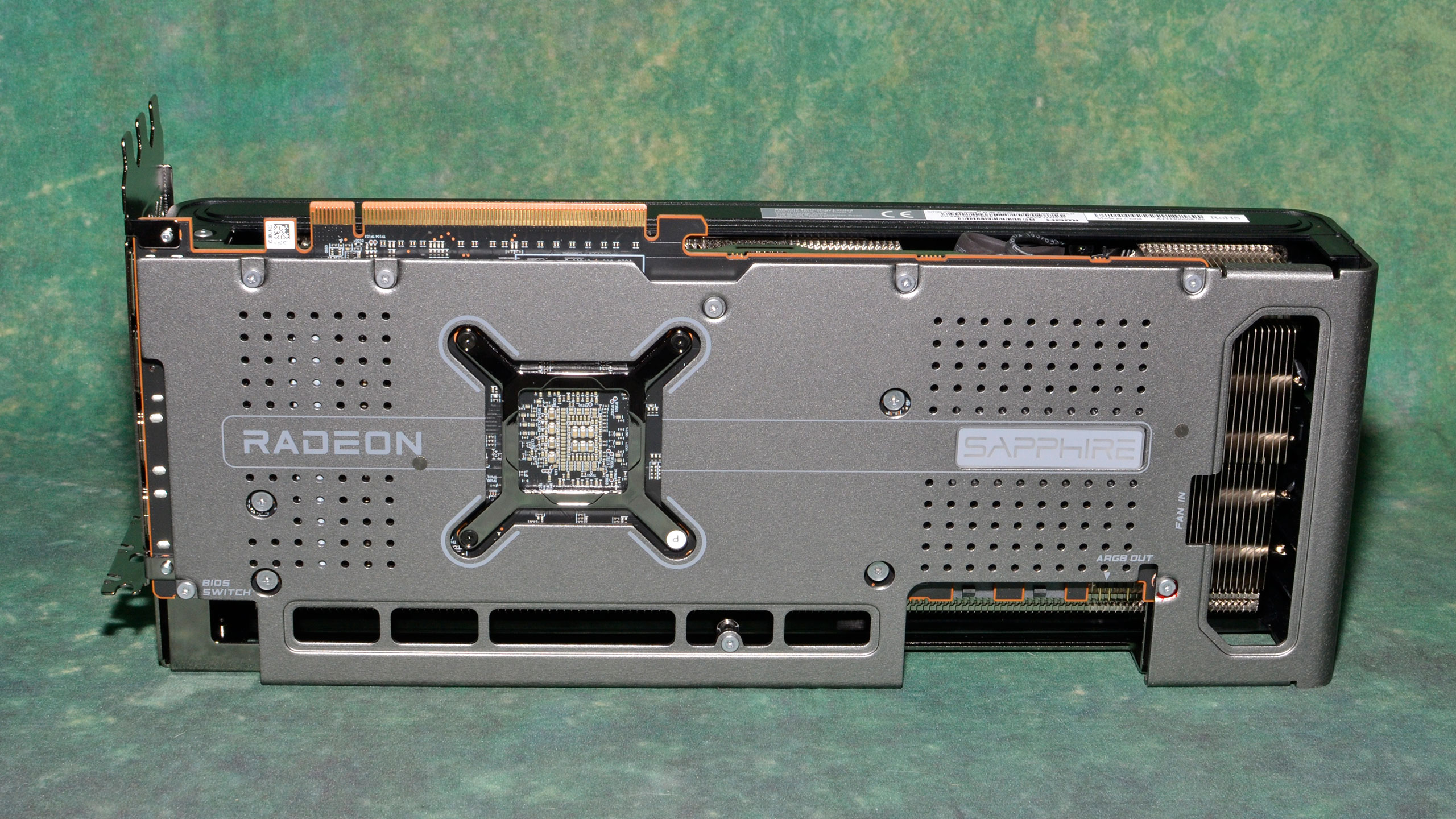Why you can trust Tom's Hardware
The Sapphire RX 7800 XT Nitro+ performs very much like any other RX 7800 XT when it comes to framerates. That's what always happens, so if your purchasing decision starts and ends with how many FPS you can get, there's not much reason to opt for a more expensive custom card instead of a reference card. But if you care about noise are perhaps RGB lighting, the Nitro+ has a lot more going for it.
Throughout our testing, the Sapphire card was barely audible above the noise floor of our testing environment. Depending on the rest of your PC, CPU and case fans can easily drown out the noise from the card. If you're trying to build a quiet but performant system, the Sapphire 7800 XT Nitro+ makes for an excellent choice.
Aesthetics, meanwhile, tend to be very personal. Some people love RGB lighting and others prefer a stealth black system. AMD's reference card caters to the latter, with no lighting and an understated appearance. It's too bad it doesn't have cooling and noise levels to match.

If you're already in the market for an RX 7800 XT graphics card, Sapphire's Nitro+ easily warrants consideration. Besides the top-tier Nitro+, it also has a Pulse model that might be worth a thought. However, the Pulse also cuts the fan count to two, and while the fans are still superior to AMD's reference card, we'd expect higher noise levels and thermals compared to the Nitro+.
Is the Nitro+ worth an extra $60? Again, depending on what you're after, yes. Anyone wanting a compact graphics card will need to look elsewhere, as this one is very large. Spending more for the big and bright RGB bar on top of the card may also be warranted for some folks. But from the pure performance perspective, you'd be better off putting the money into something else.
Street prices on the Nitro+ are also not great right now, currently sitting at $100 over the $559 MSRP. We don't expect them to stay that high, but it may take a few weeks for things to settle down. Otherwise, there are almost certainly better options for under $600.
The Sapphire RX 7800 XT Nitro+ doesn't radically change the story of AMD's Navi 32 lineup. It does fix some of the biggest shortcomings, though, like the relatively weak cooling of the reference card. For that reason, we rank it slightly higher than the reference card, even though we're giving both the same 3.5-stars score — consider this a 3.75-star card if that helps. That the advantage of course is contingent on retail prices coming down to the $559 MSRP or lower.
Ultimately, Sapphire's RX 7800 XT is a great example of a custom card that delivers everything you could want from the core GPU, provided you have a case that can accommodate the card. However, we still wish AMD had been able to create more of a separation between the new 7800 XT and the previous generation 6800 XT.
- MORE: Best Graphics Cards
- MORE: GPU Benchmarks and Hierarchy
- MORE: All Graphics Content
Get Tom's Hardware's best news and in-depth reviews, straight to your inbox.
Current page: Sapphire RX 7800 XT Nitro+: The Big, Silent Type
Prev Page Sapphire RX 7800 XT Nitro+: Power, Clocks, Temps, and Noise
Jarred Walton is a senior editor at Tom's Hardware focusing on everything GPU. He has been working as a tech journalist since 2004, writing for AnandTech, Maximum PC, and PC Gamer. From the first S3 Virge '3D decelerators' to today's GPUs, Jarred keeps up with all the latest graphics trends and is the one to ask about game performance.
-
The 16 GBs of VRAM alone, are more than enough to instantly make this a better purchase than the pathetic 4070 Ti.Reply
-
Colif At least they didn't describe it as the Sexiest 7800xt, unlike KitguruReply
Paying extra for a quieter GPU is probably worth it. -
oofdragon So... 108fps vs 121fps against the 4070Ti, a difference no one can notice in real gameplay. That missing VRAM though? Even playing at 1440p we know it's not enough already, goes to show how overpriced Nvidias cards really are. So even if the 4070Ti costed $500 right now the 7800XT would still be the better buy. Thats the result of greed and planed obsolescence for you, a behavior I don't fund with my money. My 2 cents though, tight now the 6800XT is still the better buy at ebay around $400, it's virtually the same GPU.Reply -
Elusive Ruse The obsession with ray tracing is unhealthy, unfortunately all reviewers and influencers have drunk the kool aid. If you didn't know you would think it's some kind of ubiquitous feature across the entire gaming industry.Reply -
gg83 @JarredWaltonGPU why do you think the 6800xt is so close to the 7800xt? And do you think AMD spent a lot of money designing these new cards, or just took this generation off?Reply -
hnrich May as well just pay the little bit extra to get the cheapest 7900xt.....,. If you are paying more for a 7800xtReply -
PEnns ReplyElusive Ruse said:The obsession with ray tracing is unhealthy, unfortunately all reviewers and influencers have drunk the kool aid. If you didn't know you would think it's some kind of ubiquitous feature across the entire gaming industry.
And when Nvidia's cards are losing badly, they immediately include Ray tracing in the "reviews" where their cards have some advantage!!
Shameless shilldom. -
hnrich Reply
I think raytracing will become more and more common though, especially to highlight the advantage of pc gaming over consoles. A lot of AAA titles are featuring it now. That and lack of dlss make me reluctant to buy an AMD card. I think fsr2 has pretty poor image quality.Elusive Ruse said:The obsession with ray tracing is unhealthy, unfortunately all reviewers and influencers have drunk the kool aid. If you didn't know you would think it's some kind of ubiquitous feature across the entire gaming industry. -
NeoMorpheus Reply
But per the article….valthuer said:The 16 GBs of VRAM alone, are more than enough to instantly make this a better purchase than the pathetic 4070 Ti.
-Cons
AMD RDNA 3 isn't as efficient as Nvidia
We get it, loyalty above anything else. -
Lamarr the Strelok For at least a few years now Nvidia has been more power efficient compared to an AMD card with similar specs.I despise Nvidia right now but it's generally true.I'm on AMD right now and have had Nvidia cards before.Reply
So no. It has nothing to do with 'loyalty'.

